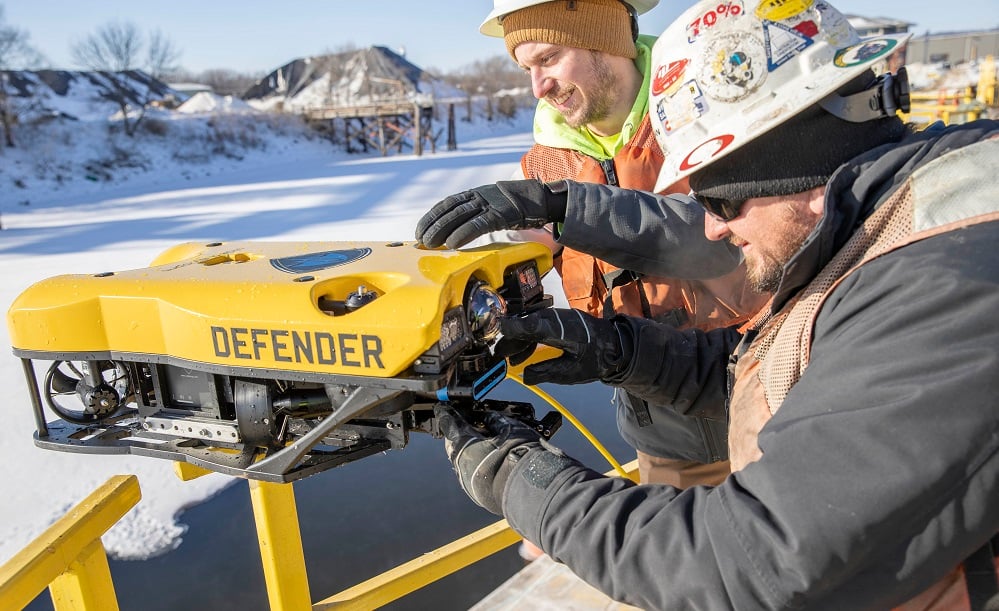ROV stands for remotely operated vehicle. They are highly maneuverable unoccupied machines used to observe and work underwater, often in areas that are deemed too dangerous for commercial divers. ROV pilots can operate them from a nearby shore or boat.
Remotely operated vehicles are versatile tools commonly used in our industry to inspect, monitor underwater structures, and perform complex work tasks in depths divers cannot access. Although, more recreational ROVs are available with advancements in technology. These revolutionary machines are utilized by many industries to reduce costs to clients and keep divers safe in unknown or dangerous conditions.
A Short History of ROVsPeople have long attempted to reach places underwater that are too dangerous or too deep to venture. While trained divers did their best, it wasn’t until 1953 that we came close to success with the first fully developed ROV, POODLE, created by Dimitri Rebikoff. POODLE was an adaptation of his diver scooter with a tether and surface controls.
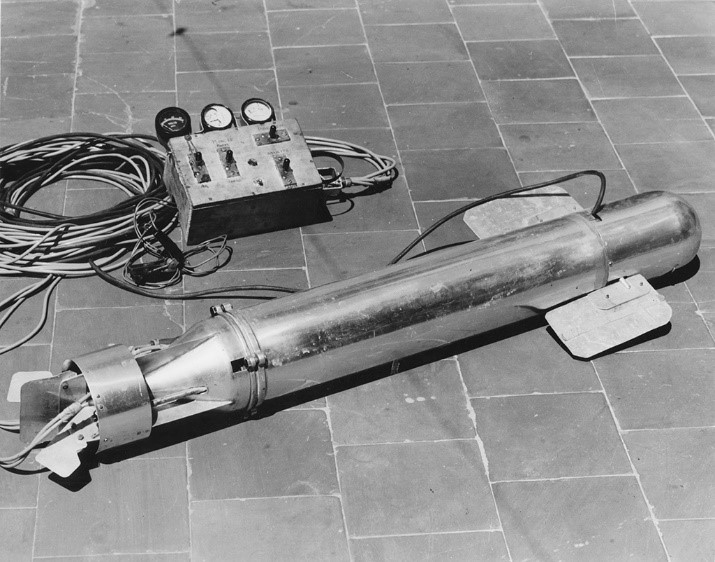 Photograph of the first remotely operated vehicle (ROV).
Photograph of the first remotely operated vehicle (ROV).
In the 1960s, ROV technology started to gain speed when the U.S. Navy took an interest. ROVs were first tested to retrieve underwater information and in 1966, the Navy's CURV successfully recovered an atomic bomb that went missing off the coast of Spain. By the end of the 1980s, more than 500 ROVs were being used for commercial and military operations around the world as technology advanced. Oil and gas led the charge to this advancement by building ROVs to perform work on offshore platforms in depths up to and beyond 20,000 feet.
Today, ROVs are not just for military or commercial use; micro-class ROVs are available for the public to purchase for exploring shallow waters.
Types of ROVs
Underwater remotely operated vehicles range in size from a small computer to as large as a small pickup truck. Smaller ROVs tend to be used for observations and inspections, while larger ones can hold tools and may be used for repairing underwater equipment and infrastructure. Some ROVs are completely electric driven while others use a combination of hydraulics and electric drive systems supplied from the surface through their umbilicals. There are also autonomous ROVs that utilize batteries and wireless technology to rid themselves of an umbilical altogether.
There are four main classes of underwater ROVs that are used across industries:
- Observation Class
- Light Work Class
- Work Class
- Mini or Portable Class
Observation Class
These are smaller in size and used to explore places like coastal waters, rivers, and small lakes. Construction, oil, and shipping industries use observation class ROVs to inspect infrastructure and the underwater area to help plan future projects. These ROVs are equipped with high-end cameras and lightweight sonar systems to avoid missing any small details like cracks. A manipulator (arms and hands) on one of these vehicles tends to be small with limited functionality (1-3 functions typically), and their thrusters can be either vectored or standard. Some of these ROVs are Fiber Optic (FO) capable, allowing them to operate a wider variety and number of sensors/instruments at the same time.
Light Work Class
The in-between cousin of observation and work class, light work class ROVs are used for medium to deep depths of water and can carry light payloads. They can have large extensions and special inspection devices to help with their work. Many have more sophisticated manipulators to help them complete tasks that require more dexterity (3 to 4 functions). Light work class ones are being used for offshore wind farm maintenance, survey research, infrastructure repair, dive support, and much more. These ROVs are also generally vectored thrust vehicles that can maintain position and move through the water with more precision and are FO capable.
Work Class
Work class ROVs are larger vehicles used for ocean floor exploration and deep depths that divers cannot reach, as well as heavier construction tasks that take more time on the bottom than divers can spare. They can carry additional sensors and have multiple capabilities that allow for additional tools due to their FO-equipped umbilicals. They are very powerful and useful for many industries, especially the oil and gas industries where they are used to carry out drilling and other operations. Their sensor and sonar arrays can image large areas or provide minute details to specific structures. Most are equipped with a pair of manipulators—one for heavy lifting and grasping and the other with up to 7 individual functions that can be nearly as nimble as the human hand! The thrusters on these ROVs are vectored and very powerful, producing from 50 to over 200hp.
Mini or Portable Class
Weighing less than 110lbs, these small ROVs are becoming more popular for their portability and ease of going into small spaces. They are usually equipped with a light, camera, and maybe a grabber (single function manipulator) to pick objects up with. Industries utilize them within pipe systems and shallow depths to inspect infrastructure. Recreational ROVs fall under the mini or portable class and are typically not vectored or FO capable.
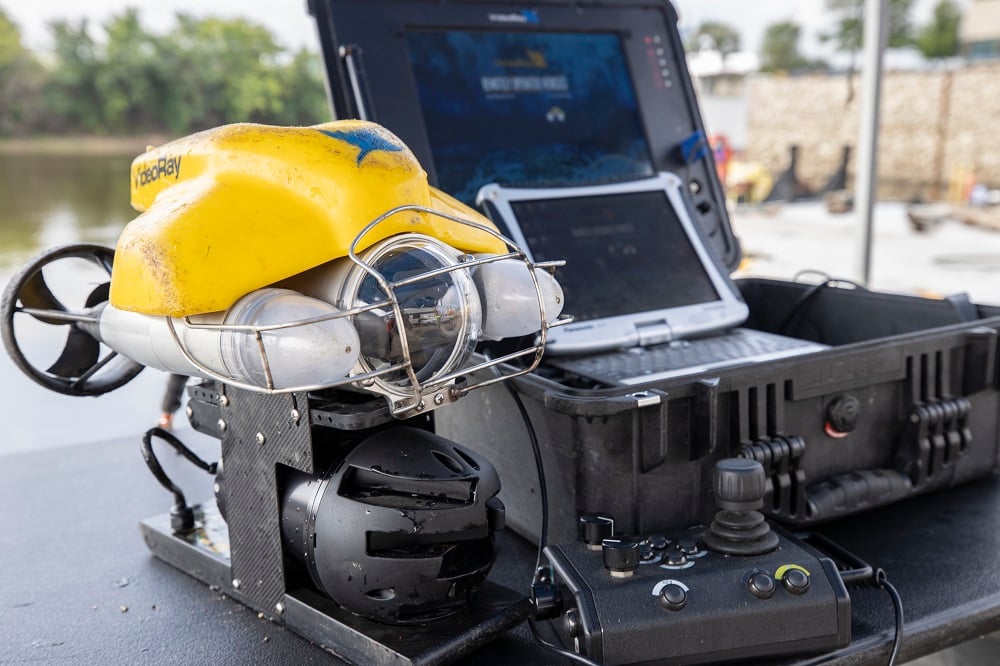 One of Brennan's ROVs is onsite at a project, ready to be deployed.
One of Brennan's ROVs is onsite at a project, ready to be deployed.
ROV Components
While underwater remotely operated vehicles come in various sizes for different classes, they mostly have the same common elements. They often have simple designs underneath at their core with increasing more technical programming depending on what it’s being used for. The basic components of a typical ROV are:
- Camera – The whole point of a remotely operated vehicle is to see what is in the water where divers are unable to go. Each ROV is equipped with a camera, sometimes multiple. The type of camera differs from each vehicle and what it’s being used for. The more angles a camera can provide to the operator, the better inspection is provided.
- Lights – Sunlight disappears as water gets deep/murky and ROVs need sufficient lighting to see what they are inspecting, so each one is equipped with high-quality lights.
- Tether – Every vehicle has a tether that carries power to the surface allowing the controller to view the camera and move the ROV around. Currently, wireless technology is unable to control ROVs because radio signals do not travel far enough in the water.
- Thrusters – A series of electronic or hydraulic powered thrusters allow the machine to move around in the water. The multiple thrusters allow it to change directions. The position of the thrusters within the Frame of the ROV has a big impact on its maneuverability and station (position) keeping. Vectored thrusters allow an ROV to move in any direction at any time, and better withstand the forces of current and uplift/down drag to keep an ROV in position or on a specific path.
- Frame – The frame is what gives the machine its structure and holds all the tools, from the camera and lights to any specialized components. The frame is typically rectangular, which is easier to modify to suit an industry's needs. but specialized shapes are becoming more popular with advances in technology. The frame also controls the positioning of the thrusters and determines if they can be vectored or not (vectoring of thrusters places them at the 4 corners as well as vertically mounted units).
- Manipulators – These are the ROVs arms, hands, and fingers for operating tooling, performing tactile tasks, and delivering/retrieving objects/payloads from the bottom.
- Instrumentation – ROVs can support a wide variety of sensors, sonar, positioning devices, beacons, and another tooling to perform inspection and construction tasks. If an ROV is FO equipped, it can support multiple instruments that can communicate to the pilots at the same time.
- Controls – The surface controls come in many forms from small travel-sized smartphone styles to more advanced rooms of controls. They allow the pilot to control the ROV as well as provide the display feedback, including the camera underwater.
These are only the essential components that are found on an underwater remotely operated vehicle. More advanced or specialized vehicles could consist of other components such as sensors, robotics arms, sonars, and sampling devices depending on the ROV’s application.
Benefits of Using an ROV
Due to the variety of underwater ROVs, they have a multitude of uses. From exploring depths unreachable to divers to helping inspect our country’s infrastructure, they are one of the top underwater tools. Modern vehicles have many benefits over other forms of underwater observation tools.
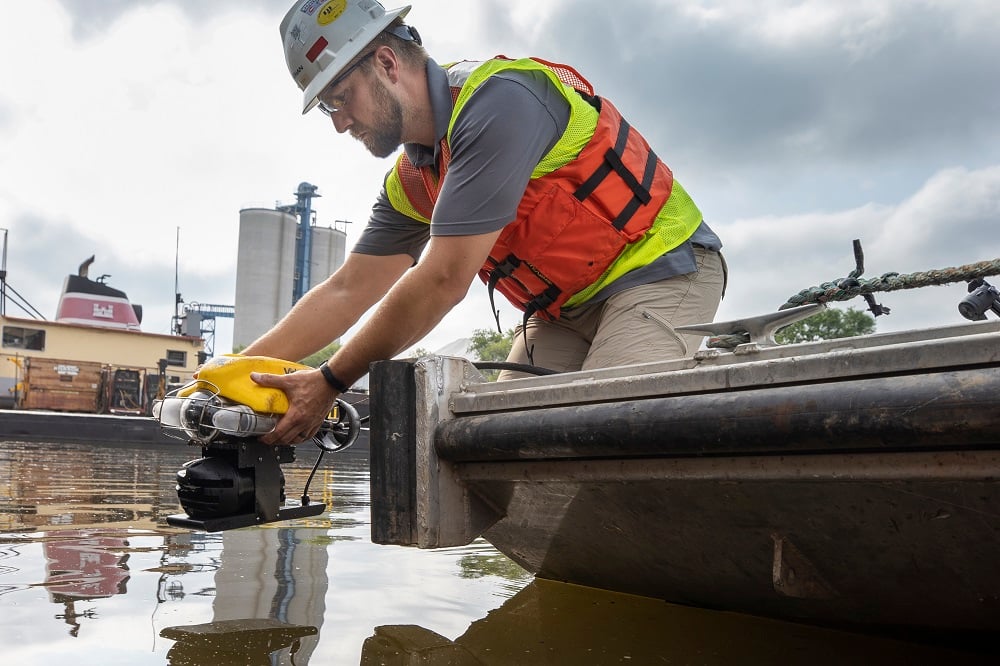 Our team member deploying one of our ROVs for an underwater inspection.
Our team member deploying one of our ROVs for an underwater inspection.
The benefits of using ROVs are:
- Increased Safety
- Accessibility
- Quick Deployment
- Lower Maintenance
- Sonar and Recordings
- Longer Exploration Time
ROVs Ensure Safety
One of the top reasons to use an ROV is that it allows exploration of an area that may be too dangerous for a diver due to the pressure of the water, temperature, or space. ROVs are able to go into almost any place underwater, keeping divers safe.
ROVS can also be used alongside a team of divers. Many are deployed prior to a dive to make sure the water is safe, preventing any uncertainty about the situation. Once in the water, the pilots can monitor diving teams to ensure the divers do not get caught on something or watch for any other dangers that might come along.
ROVs Provide More Accessibility
ROVs were created with the idea to gain access to unreachable underwater places. While some professional divers are able to dive deep, they cannot reach the depths that ROVs can. Professional ROVs have a range of 300m - 6,000m, while recreational ones have a range of 10m - 150m. The range of an ROV is dependent on how it was built and the length of its tether. The deepest an ROV has gone was when the Nereus successfully dove 10,902m (6.8 miles) into the deepest trench on Earth - the Pacific Ocean’s Mariana Trench.
ROVs Deploy Quickly
When time is limited in underwater exploration, it is important to act quickly. ROVs can be deployed into the water rapidly and safely. Some can even be deployed in as little as 30 seconds.
ROVs Require Low Maintenance
Even in the more basic models, underwater ROVs are designed and built to be durable even under the intense pressure of the ocean. They can withstand harsh temperatures and environments with little maintenance for years. The smaller inspection and recreational ROVs need very little maintenance, while the larger and work class ROVs do require a specialized team of pilots and technicians to keep them in good working order.
ROVs Provide Sonar and Recordings
Clients can get a copy of the video; or if in blackout conditions, they can get a copy of the sonar recordings. From those videos or sonar recordings, you can also take still images to highlight certain areas. ROV pilots can take their time looking underwater, to find any issues that would cause expensive repairs down the line.
ROVs Allow for Longer Exploration Time
Commercial divers are limited in the amount of time they can safely spend at a particular depth, but ROVs can spend upwards of 8 hours in the water depending on their battery life or pilots’ ability to stay at the controls. Operators can take their time looking at the video streams and photographs to thoroughly inspect areas and equipment and perform simple/repetitive tasks for hours without having to decompress as a diver would.
What Are ROVs Used For?
Several industries utilize underwater ROVs to conduct research, do inspections, and make hard-to-reach repairs, saving divers from having to go into unsafe territories. They are excellent tools for not only commercial uses but to examine the deepest points in the ocean for educational purposes.
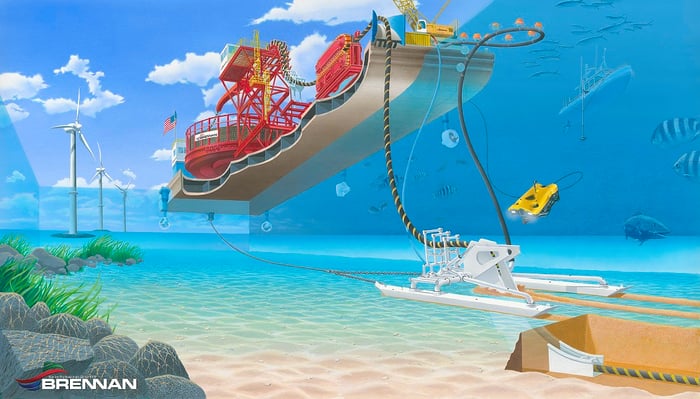 Illustration of an ROV on a submarine cabling project, laying cable for an offshore wind farm.
Illustration of an ROV on a submarine cabling project, laying cable for an offshore wind farm.
The most common industries that use ROVs are:
- Oil and Gas Energy Companies
- Marine Construction
- Shipping
- Military and Law Enforcement
- Underwater Research
Oil and Gas Energy Companies
Energy companies in all mediums, like wind, solar, oil, nuclear, and others, have divisions that require infrastructure underwater. Due to this, they were one of the first industries to explore and expand ROV research. ROVs allow oil and gas companies to inspect and make any emergency repairs quickly. They are a safe form of periodic monitoring compared to sending divers to possibly dangerous waters. Large work class ROVs are common in the energy industry because they can dive as deep as 6000 meters and lift up to 11,000 pounds; this is perfect for building new offshore rigs and deep underwater pipelines.
Marine Construction
Underwater ROVs are used to inspect marine areas for construction, especially in confined spaces, deep water inspections, long in-water durations at depth, or any other places where the conditions are deemed unsafe for divers. Remotely operated vehicles can be used to help plan and execute underwater construction, like dams and bridges. The information gathered by ROVs during inspections can be used to create 3D maps of the underwater areas to help plot out construction needs and potential issues.
Shipping
Inspections of boat hulls during travel and when entering a port are necessary for the shipping industry. To do this, they use ROVs to examine the ship and its structural integrity. One of the more recent uses for ROVs includes inspecting the marine coating on the bottom of the ships. Marine coating is protective paint applied to the surfaces of ships or offshore oil rigs to prevent marine organisms, like barnacles, from attaching to the structure. Some ROVs can measure the paint thickness of the marine coating to decide when it needs to be reapplied, as well as help clean the surface if there are any organisms on it.
Military & Law Enforcement
The creation of ROVs can be given credit to the military looking for a way to recover lost items. Today, the military uses ROVs for a variety of reasons but mostly in ways that would be dangerous to divers otherwise. The primary use is to keep waters safe by deploying ROVs to find any threats that might be hiding in ships that come into port. ROVs are also used to find contraband on ships or even explosives lurking in the water that may cause harm.
Similarly, to how the military employs ROVs, law enforcement uses them at commercial ports for security by monitoring the waters and submerged infrastructure to make sure there isn’t damage or maintenance needed. Law enforcement also uses ROVs for criminal investigations, commonly with sunken vehicles that divers cannot reach.
Underwater Research
ROVs are not only for inspecting structures and looking for threats in the water, but they are also a great tool for researching marine biology, the ocean floor, and overall environmental research. Specialized components can be added to ROVs that measure water parameters and collect samples for analysis. They can also be used to search for plane crashes, caves, and shipwrecks.
As with other industries, ROVs allow researchers to go where divers are restricted, such as deep into the ocean or areas of environmental distress. They are also a cost-effective option for those working on grants where a team of professionally trained divers would cost too much and take longer than with an ROV.
How to Become an ROV Operator
Being a Remotely Operated vehicle, allows a person to oversee the complex equipment while working in a variety of fields from construction to oceanography. There’s no straight path to becoming an ROV operator; many people have degrees in varying backgrounds from marine biology to electronic engineering. Some may even have military training and vocational qualifications.
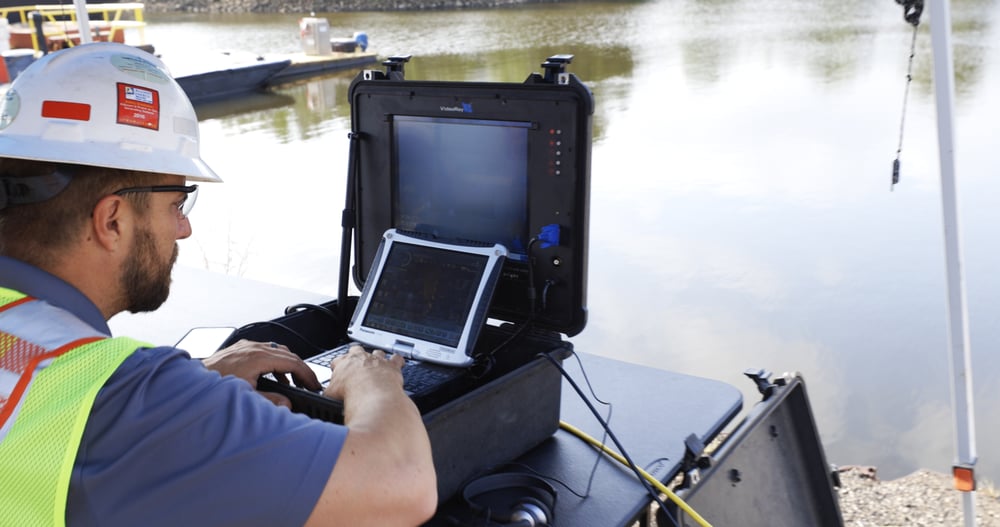
The Center for Ocean Sciences Education Excellence (COSEE) provides training for ROV pilots and is a good starting point for obtaining a career as an operator. At the COSEE, you will learn how to navigate ROVs using simulators that will teach you how to operate under various conditions and will certify you for your journey. Many ADCI accredited commercial dive schools also offer ROV training curriculums for those wanting to do both or specialize in either.
Underwater ROVs for Your Next Project
At Brennan, we use underwater ROVs equipped with the latest electronic survey systems to inspect waterways and collect valuable information that clients can use to plan out their projects. By using ROVs in combination with our team of expert commercial divers, we can provide the data and information needed for any underwater project at a lower inspection cost to dock owners, property owners, and engineering firms while eliminating safety risks to divers. Contact us to learn more about our underwater ROV services.
Why does Brennan use a 4-person dive crew? Commercial Diving: Should 4-Person Teams Be the Norm?
Are you looking for an experienced, certified commercial diver with the knowledge necessary to perform thorough underwater inspection, construction, and reporting? Download a brochure on our Underwater Services

